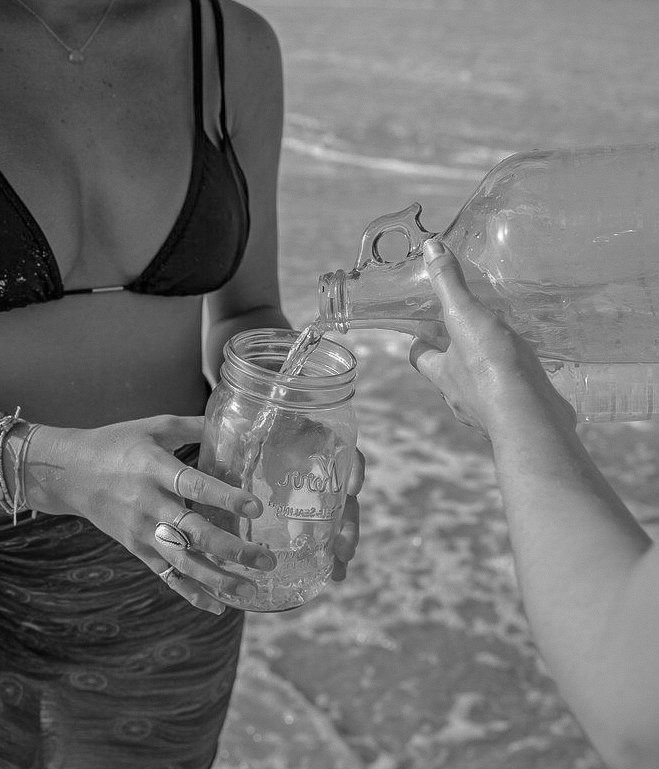Your Fancy Bottled Water is Likely Just Tap Water.
If you’re drinking bottled water, there’s a good chance it’s tap water.
Recent studies have shown that up to 50% or more of mass market bottled water is simply tap water. For decades we have been sold the narrative that bottled water is cleaner, safer, and often healthier than tap water. This is untrue. “The U.S. Environmental Protection Agency oversees the quality of water that comes out of your tap, while the U.S. Food and Drug Administration is responsible for ensuring the safety and truthful labeling of bottled water sold nationally. States are responsible for regulating water that is both packaged and sold within its borders (which is most of the bottled-water market), but one in five states doesn't even bother,” (1). With loose regulations and predatory marketing practices, bottled water companies across the country continue to sell the narrative that bottled water is different.
So, what makes it different?
“Both kinds of water are tested regularly for bacteria and most synthetic organic chemicals, but city tap is typically assessed much more frequently. For example, bottled-water plants must test for coliform bacteria just once a week; city tap needs to be tested 100 or more times a month,” (2). Bottled water does have a leg-up on tap in one area: tap water is still subject to heavy lead levels due to antiquated infrastructure. we saw the repercussions of this in Flint, Michigan in 2014. Alternatively, bottled water is more likely to be contaminated with microplastic particles than other sources. Otherwise, the list of chemical pollutant limits is relatively identical for both tap and bottled water. The main difference is the frequency at which that testing occurs.
On average, Americans spend as much as $100 billion annually on these bottles of tap water. The cost of a gallon of bottled water is just under $10 per gallon, which is up to three times that of the cost of a gallon of milk, and four times the cost of a gallon of gasoline. “Bottled water costs nearly 2,000 times more than tap water, which costs less than a cent per gallon,” (3). In 2007 both Pepsi (Aquafina) and Nestlé (Pure Life) had to change their labels to more accurately reflect the fact that their water was not in fact safer or cleaner than tap, but rather that it was… just tap water. Food & Water Watch explained in a new report entitled "Take Back the Tap" that up to 64 percent of bottled water comes from municipal tap water sources. This means that Americans are often unknowingly paying for water that would otherwise be free (or nearly free). "When bottlers are not selling municipal water, they are pumping and selling common water resources that belong to the public, harming the environment, and depleting community water supplies," reads the study. This is detrimental for many reasons. “The bottled water industry has an enormous environmental footprint, using about four billion pounds of plastic for packaging in 2016—which required an energy input equal to at least 45 million barrels of oil. Nestlé also depleted California's scarce water supplies during its recent historic drought, using up water that could have been used by nearly 2,200 households per year,” (4). The report also urges that legislators pass The Water Affordability, Transparency, Equity, and Reliability (water) Act, which would dedicate federal funds to renovating the countries public water infrastructure to avert not only a water affordability crisis, but potentially a water safety crisis like we witnessed in Flint.
Unfortunately, most people don’t realize that drinking water from the tap comes at a fraction of the cost of bottled water and generally comes with more safeguards than bottled water. Adding the usage of pre-filters like those from IonFaucet as well as the various filters within the Kangen water machine are additional safeguards to prevent the consumption of unsafe water. So, if you’ve been sticking to plastic bottled water because you believe that it’s superior to tap, you’ve been misled.
